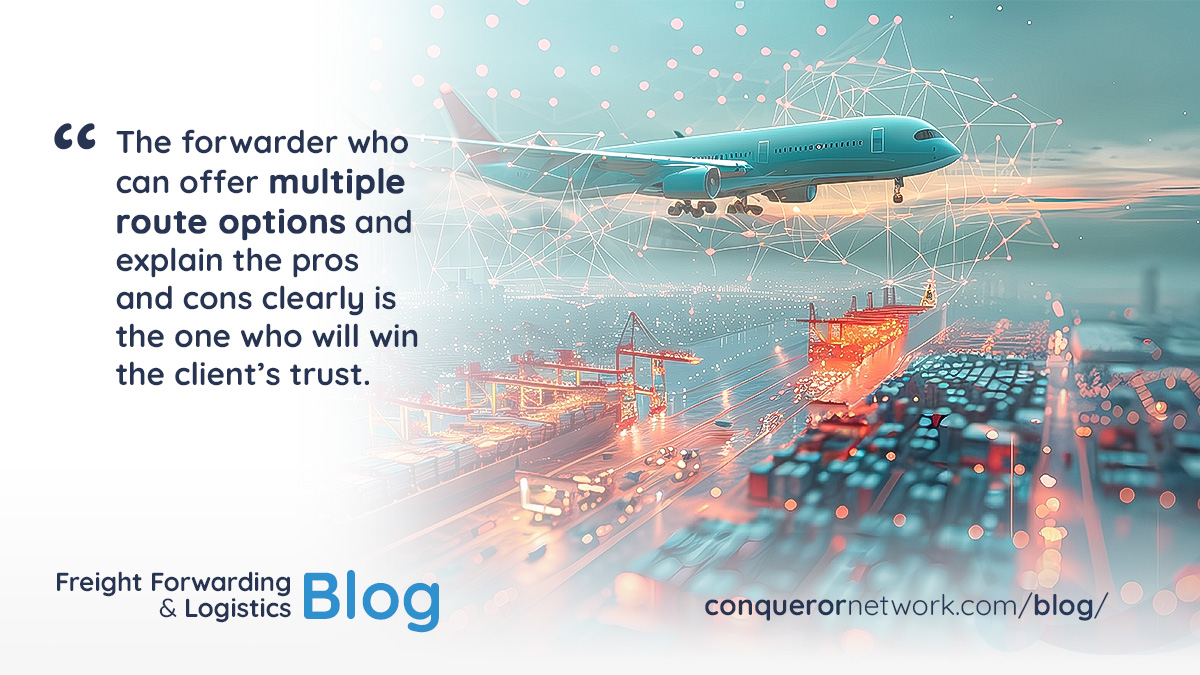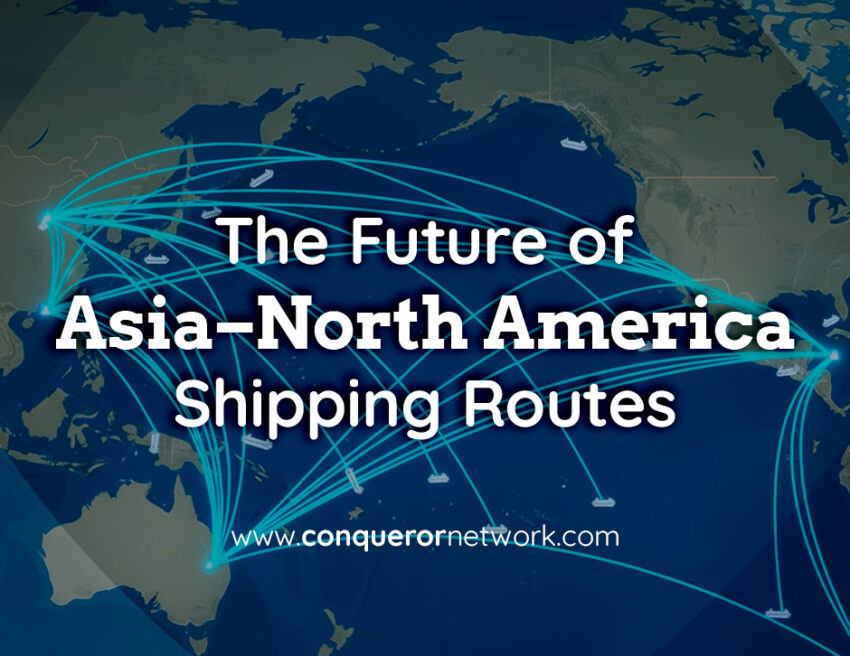If you’re a freight forwarder handling trans-Pacific cargo, you’ve probably noticed how unpredictable things have become. Between port congestion, shifting trade policies, and new alternative lanes opening up, the Asia–North America shipping routes you rely on are evolving quickly. What this really means is that staying competitive is now about anticipating change and adapting faster than the next guy.
Let’s break down what’s happening across these routes, why it matters for independent forwarders like you, and how you can position yourself to win business while avoiding unnecessary risks.

Why Asia–North America Shipping Routes Are in the Spotlight
Here’s the thing: Asia and North America are tied at the hip when it comes to global trade. China, Japan, South Korea, and Southeast Asian economies continue to be massive exporters, while the United States and Canada remain two of the largest consumer markets in the world. That trade has to move somehow, and for decades, ocean freight across the Pacific has been the backbone.
But recent years have shown just how fragile those links can be. The pandemic left ships queuing for days outside Los Angeles and Long Beach. Strikes at West Coast ports sent shippers scrambling for alternatives. And now, rising geopolitical tensions and climate-related disruptions are forcing companies to rethink long-standing logistics strategies.
For freight forwarders, this is a double-edged sword. On one hand, uncertainty creates headaches, rerouted cargo, delayed sailings, unpredictable transit times. On the other hand, shippers are more open than ever to forwarders who can deliver creative, flexible solutions. That’s an opportunity worth seizing.
Shifting Cargo Demand and New Trade Corridors
Demand between Asia and North America is anything but static. For instance, U.S. consumer buying habits have shifted since the pandemic, with more emphasis on e-commerce and smaller, frequent shipments. Meanwhile, manufacturing diversification is changing the map. Companies once heavily reliant on China are now moving production into Vietnam, Thailand, and India.
This means forwarders should expect Asia–North America shipping routes to diversify. Instead of everything funneling through the traditional China–U.S. West Coast lane, we’re now seeing more cargo flow through Southeast Asian ports and arrive at East Coast and Gulf Coast destinations. The Panama Canal, while facing capacity issues due to drought, still plays a vital role, but the Suez Canal route and even Canada’s growing Pacific gateways are on the radar for many shippers.
The key takeaway: flexibility is currency. The forwarder who can offer multiple route options and explain the pros and cons clearly is the one who will win the client’s trust.
Port Congestion and the Push for Alternatives
Port congestion isn’t going away. Yes, volumes have leveled somewhat since the peak chaos of 2021, but infrastructure on both sides of the Pacific is still under strain. U.S. West Coast ports, especially Los Angeles/Long Beach, remain highly vulnerable to labor disputes and surges in volume. East Coast and Gulf Coast ports have improved capacity, but they bring longer transit times and higher all-in costs.
Alternative gateways are becoming more popular. Prince Rupert and Vancouver in Canada, for instance, offer direct Asian connections with reliable rail links into the U.S. interior. Mexico’s Pacific coast is also getting attention as shippers look to bypass bottlenecks further north.
For forwarders, this is the time to rethink your playbook. Do you have trusted partners in these emerging gateways? Can you offer clients real-time updates on which ports are moving smoothly and which are congested? This is where being part of a trusted logistics network pays off—you get local expertise without having to reinvent the wheel.
Technology and the Next Phase of Trans-Pacific Shipping
Digitalization is transforming how Asia–North America shipping routes are managed. E-booking platforms, rate visibility tools, and automated documentation are becoming standard. Shippers now expect their forwarders to provide data-driven insights, not just paper-based paperwork.
But technology isn’t just about shiny new tools. It’s about enabling forwarders to work smarter. Imagine being able to show your client a side-by-side comparison of transit times via the U.S. West Coast, Gulf Coast, and Canadian ports, all pulled in real time. That’s value. That’s what makes a forwarder irreplaceable.
The challenge, of course, is that smaller, independent forwarders often lack the resources to build or buy every piece of tech. That’s where collaboration comes in. By joining a global network like , you not only gain vetted partners in key ports but also access to tools and strategies that make you look as sharp as the biggest players.
Sustainability and Its Role in Future Trade
It would be impossible to talk about the future without touching on decarbonization. Shipping is under pressure from the IMO’s 2030 and 2050 emissions goals. Carriers are experimenting with green fuels, retrofitting vessels, and even rerouting to cut emissions. These changes will affect rates, transit times, and available capacity on Asia–North America shipping routes.
Shippers are already asking forwarders about greener options. For many, sustainability reporting is no longer optional—it’s mandatory. Independent forwarders who can demonstrate awareness of sustainable choices and partner with carriers aligned to these goals will stand out.
What This Means for Freight Forwarders
So, where does all this leave you? Here are the big takeaways:
-
Stay flexible: Relying on a single route or port is no longer an option.
-
Diversify partners: Build strong relationships in emerging gateways like Vietnam, Prince Rupert, or Mexico.
-
Embrace tech: Even basic visibility and data-sharing tools set you apart from forwarders who still operate “old school.”
-
Think green: Clients want solutions that reduce environmental impact. Be ready with options.
Most importantly, don’t try to go it alone. Logistics today is about networks—sharing intelligence, pooling resources, and offering clients global reach with local expertise.
How Conqueror Freight Network Can Help
Independent forwarders often face the toughest balancing act: competing with multinational giants while keeping overhead lean. This is exactly why Conqueror Freight Network exists. By connecting carefully selected forwarders in over 260 cities worldwide, it gives you immediate access to trusted partners along every major trade corridor including the critical Asia–North America shipping routes.
With Conqueror, you don’t just gain partners. You gain credibility, access to cutting-edge tools, and the ability to pitch your clients with confidence, knowing you can deliver. In a world where trade lanes shift overnight, that kind of backing isn’t optional—it’s essential.
Final Thoughts
The future of trans-Pacific trade is complex, but it’s also full of opportunity. For freight forwarders willing to adapt, invest in partnerships, and embrace new ways of working, the next decade could be one of growth and success. The Asia–North America shipping routes may be changing, but the forwarders who evolve with them will remain indispensable to global commerce.


